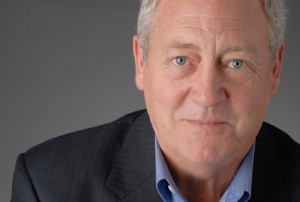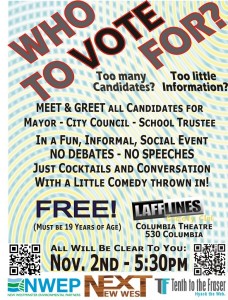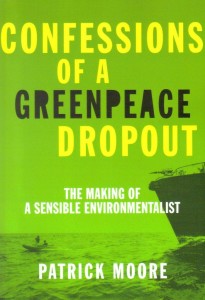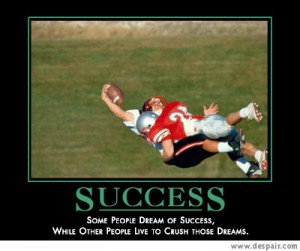Still not through this book. What can I say, a lot has been happening in my life. There is lots of cool stuff about his campaigning in the 70s, with significant amounts of daring do and hijinks on the high seas, but first I would like to make one more point about Chapter 1.
For a guy with a Ph.D. in science, Dr. Moore has a pretty poor understanding of the scientific process. He seems to gloss over why it took him so long to get his dissertation done, although he alludes to corporate conspiracy. I wonder if he ever took a philosophy of science course? To be fair, he might be a victim of an overzealous editor’s ham-fisted attempt to dumb it down for the masses, but it comes across as a Grade 8 Science class outline of what science is, and how it works.
It starts with describing science as
“the accumulation of knowledge that could be passed down through generations” (p. 25).
Science is not a cumulative body of knowledge; it is a process to evaluate ideas, explore and describe the processes behind observable phenomenon, and make predictions based on a body of observational evidence. Accumulated knowledge is a product of science, but it is not what science is. That may sound like semantics, but it isn’t. Fundamentally, “science” is not a pile of books on a library shelf; it is a method to understand reality.
Then it gets worse:
“[an example of] a hypothesis is ‘If I drop a rock from a height, it will fall to the ground’. After thousands of replications the statement proves true in every case. The hypothesis is proved and soon becomes a theory, and ultimately a law, in this case a law of physics. A law is something that has never been disproven.”[p.25]
This is embarrassingly wrong, built on a meme that is repeatedly dragged out by the very pseudo-scientists he is wont to criticize (Flat-Earthers, Creationists, Wi-fi cancer-link scare mongers, etc.): that of a mythical scientific hierarchy-of-truth made up like this:
Facts < Hypotheses < Theories < Laws.
A better explanation of the relationship between those four terms is: Facts exist and can be determined with careful and systematic measurement of observable phenomenon , hypotheses are simple ideas that can be tested and verified using the measurement of facts, but only upon a framework of existing theories and laws.
A significant point: facts can exist without precision; they do not have to be exactly right to be correct. I love the story of the Richardson Problem. He was the mathematician who described the length of a border or a coastline varying based on the length of the tool used to measure it. As Mandlebrot put it: the length of Britain’s coastline increases to infinity as the ruler shrinks to infinity. But I digress…
A theory is not just a really, really good hypothesis. It is a functional model describing observed phenomena. A theory is something you test hypotheses against. Often theories describe a large number of observed phenomena in a single, elegant model. Plate Tectonics, Evolution through Natural Selection, General and Special Relativity, Germ Theory, Atomic Theory. These are the ideas upon which science is borne. Two things are certain: 1) none of them will ever be “proven”, because no-one will ever seek to prove them. The purpose of them is not to be proven, but to be accepted as useful models, upon which other ideas can be hung; and 2) They do not evolve into “Laws” by being proven. Neither of these points mean they are not “true”, or incredibly useful.
In science, a Law is usually a mathematical construct, an analytical relationship that can be used to measure, characterize, or evaluate phenomenon. Newton’s Law of Universal Gravitation says that all objects are attracted to all other objects by a force that varies relative to their mass and to the inverse square of the distances between their masses (multiplied by some factor). Laws also do not exist to be “proven” or “disproved”, they exist to allow us to make sense of phenomenon in a numerical sense, and to make predictions, within their acknowledged limits.
Since gravity is relatively non-controversial, and since Dr. Moore started with an example from gravity, let’s see how these terms are used by physical scientists when discussing gravity, starting with his example.
Rocks fall; that is an observable phenomenon. We can develop numerous theories as to why, and we can create and test various hypotheses and test them to see if they fit our theory. There are lots of observable facts: all objects fall at about the same rate regardless of weight; magnets fall at the same rate as insulators; falling objects are constantly accelerating, etc. A good theory to explain these observations (facts) is that of gravitation: that all objects with a mass are attracted to all other objects with a mass through some force. This was the theory developed by Galileo in the early 17th Century. By the end of the 17th Century, Newton had developed the math around it: the Law of Universal Gravitation: F= G *(m1*m2)/(r)^2. Through this he could predict the motions of pendulums before building them, and the motions of planets that had not yet been discovered. This Law is not the Theory “proven”; it is a mathematical formula that allows us to calculate the force described in the theory based on some measured variables.
Universal Gravitation works pretty well if you are building pendulum clocks or lobbing artillery shells, but if you try to really accurately measure the precession of the orbit of Mercury, it doesn’t work: in essence the Law was shown not to have predictive power (note, not disproven) in some special cases by Einstein’s General Relativity.
But that doesn’t mean Newton’s Universal Gravitation isn’t a perfectly valid Law, within its confines, useful for making predictions and describing an aspect of our universe. And (this is a really important part) it doesn’t even matter that neither Galileo, Newton, or Einstein really knew how gravity “worked”. Even lacking that, what would seem a fundamental fact, we could not live in the modern world without the benefit of the theory and the laws built around this force a century before the first direct observation of gravity waves.
Unfortunately, this book is full of either lazy or sloppy science. It would be pedantic to quote them all, but let me pick one paragraph that hits close to home for me, being a geologist. On Page 62, Dr. Moore describes whale evolution:
“They evolved after the great dinosaur extinction, caused by a large meteor that crashed near the Yucatan Peninsula, ending the Jurassic age. Among the dinosaurs exterminated were the large marine plesiosaurs and ichthyosaurs.”
Perhaps an ecologist can be forgiven for not knowing the Jurassic from the Cretaceous (it is only an 80 million year difference), but anyone involved in animal ecology should know the marine reptiles he named were not “dinosaurs”. Oh, and the ichthyosaurs died out at least 25 million years before the Yucatan impact. That is a lot of bad science in two short sentences.
Finally, Dr. Moore leaves the ignominious Page 25 stating that
“Science… has weaknesses. One of these is that you cannot prove a negative” (pg. 25)
To that I say: Bullshit. Science has proven, beyond a shadow of a doubt, that the Moon is not made of green cheese.
QED.








